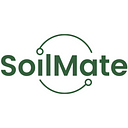SoilMate’s Weekly News Digest #18
Welcome to our collection of trending AgTech news over the last week!
Data Trends in Agribusinesses: overview
The agricultural analyst market is expected to grow at a CAGR of 14.4% from 2021 to 2026. Agricultural analysis uses cutting-edge technological advances such as Big Data, the IoT, and other analytical tools. Agricultural retailers can use these tools to enhance plant genomics, livestock management, soil health, etc.
During the pandemic, agribusiness was severely affected. Agricultural retailers can help crop producers by providing them with the tools needed to compensate for industrial failures. Agribusiness retailers need to provide their customers with the information they need to make wise decisions about their business. The future of Agritech and the relationship between retailer and customer ultimately depends on the data.
The highest carbon dioxide level in human history
This week, scientists stated that the pandemic had isolated the world economy last year. However, it has not prevented a rise in the level of carbon dioxide in the atmosphere.
Measurements at the Mauna Loa Observatory in Hawaii during May averaged 419 parts per million — the highest concentration of greenhouse gases in the atmosphere ever seen by humans. This year, the value of 419 ppm was 1.8 ppm above the value of May 2020 and close to the average annual increase since 2010.
Carbon dioxide sensors in two US urban areas have recorded reductions in emissions during the COVID-19 pandemic.
However, there is a controversial statement: according to a new study published in Geophysical Research Letters, carbon dioxide emissions in Los Angeles fell 33% in April 2020 compared to previous years, as roads and economic activity slowed down due to the COVID-19 pandemic. In the Washington, D.C., Baltimore region, CO2 emissions declined by 34% over the same period. This study shows that methods based on CO2 concentrations in the air can provide reliable emission estimates. Although emission reductions are significant, the method used by scientists to measure them may have a long-term impact.
The study traces the value of food from farm to plate all over the world.
A group of researchers developed the «Global Food Dollar» method, which distributes the net purchase dollar of the consumer for all economic and post-farm activities.
For this research, the team used data collected from 2005–15 from 61 countries, representing 90 percent of the global economy. They estimated the domestic farm share of domestic consumer expenditures on domestically produced «food at home,» «food and tobacco at home,» and «food and accommodations away from home,» using an input-output multiplier model. They found that farmers received, on average, 27 percent of consumer spending on food consumed at home and only 7 percent on food consumed outside the home. And as countries’ incomes rise, their share falls.
